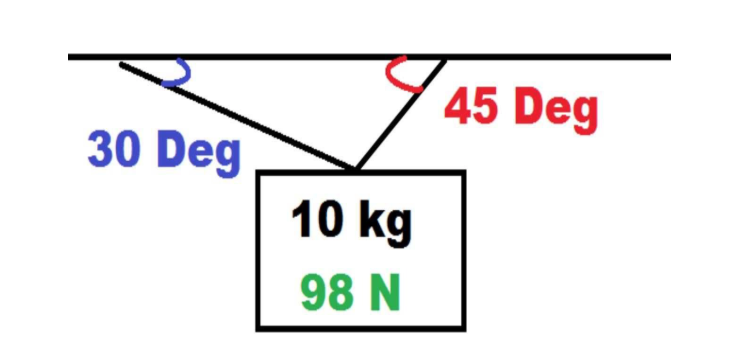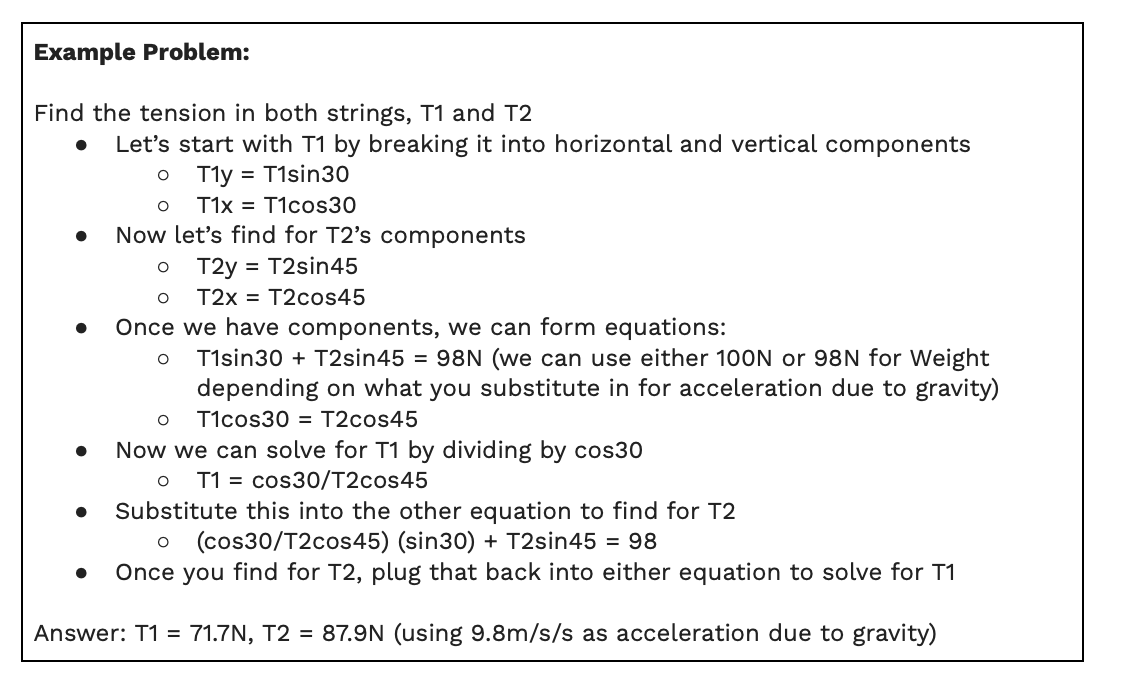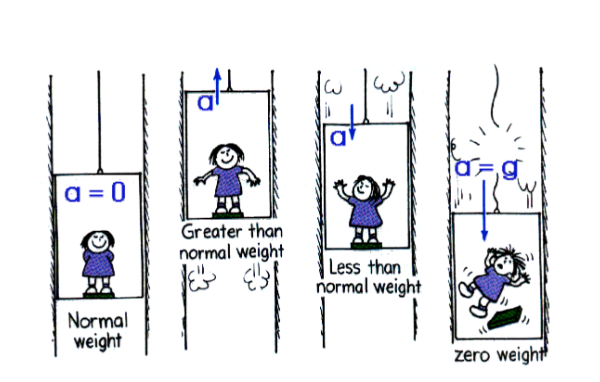
2.7 Applications of Newton’s Second Law
5 min read•december 31, 2022
Peter Apps
Daniella Garcia-Loos
Peter Apps
Daniella Garcia-Loos
Linear Motion of a System
The linear motion of a system can be described by the , , and of its . The variables x, v, and a, all refer to the center-of-mass quantities.
If you recall from there are a few major equations that relate , , initial and final , and time together.

Variable Interpretation: Δx is horizontal in meters, Vf is the final in meters/second, Vo is initial in meters/second, t is time in seconds, and a is in m/s/s.
⟶ In order to solve for a variable without having all four other quantities known, we look at the ‘Variable Missing’ column to pick the equation that best suits our question.
Here are some tips for tackling application problems involving Newton's second law:
Identify the object of interest and draw a free-body diagram (FBD).
Identify all of the forces acting on the object. Be sure to include all forces, even those that may seem small or insignificant.
Determine the direction of the forces acting on the object. (Positive or Negative? Which way is down?)
Calculate the magnitudes of the forces acting on the object using the laws of physics, such as Newton's laws of motion or the principle of .
Use Newton's second law, F = ma, to solve for the unknown quantities in the problem, such as the of the object or the force required to move the object.
Check your solution to make sure it is reasonable and consistent with the problem statement. (The best way to do this is by checking to make sure the units make sense!)
If you are having trouble solving the problem, try breaking it down into smaller parts or identifying any constraints or assumptions made in the problem statement.
Important Acceleration Formulas
The is equal to the rate of change of with time, and is equal to the rate of change of position with time.
Equation:

Equation:

Equation:

Angular Tension and Apparent Weight
Forces that the systems exert on each other are due to interactions between objects in the systems. If the interacting objects are parts of the same system, there will be no change in the center-of-mass of that system.
Unfortunately, Newton’s Second Law also includes pretty infamous problems such as and . Not to worry though, we’re going to break them down:
Key Concept: - mathematical problems when an object is held up by two or more strings at angles
Here are some steps for tackling an problem:
Identify the object of interest and draw a free-body diagram (FBD).
Identify all of the forces acting on the object, including the forces of tension.
Determine the direction of the forces of tension. In most cases, the forces of tension will act along the rope or cable, but they may also act at an angle.
Calculate the magnitudes of the forces of tension using the laws of physics, such as Newton's laws of motion or the principle of .
Use the magnitudes and directions of the forces of tension to solve for the unknown quantities in the problem, such as the angles between the rope or cable and the object, or the of the object.
Check your solution to make sure it is reasonable and consistent with the problem statement.

Image courtesy of VAM! Physics & Engineering.

🎥Watch: Organic Chemistry Tutor - Angular Tension
Key Concept: - a property of objects that relates to how heavy an object is. The of an object will be different from the true weight of an object when the Force of Gravity acting on that object is not balanced by an equal Normal Force.

Image courtesy of physics.usask.ca
When you’re in an elevator going downwards and speeding up or going upwards and slowing down you tend to feel lighter. When you’re in an elevator going upwards and speeding up or going downwards and slowing down you tend to feel heavier. Why is that? To understand fully, you must comprehend the four scenarios of the elevator problem:
When acceleration is upwards
The elevator accelerates upwards, but the inertia of a person would prefer to remain stationary, so the elevator floor must push up on the person with more force than their weight to accelerate them upwards. Therefore, Fn = ma + mg, so Normal Force is greater than true weight.
When acceleration is downwards
The elevator accelerates downwards, but the inertia of a person would prefer to remain stationary, so the elevator floor must drop out a little bit from underneath the person. This means the elevator floor must push up on the person less to support their weight, so Normal Force decreases. Therefore, Fn = mg - ma, so Normal Force is less than true weight.
When there is no acceleration
If the of an elevator is zero, the elevator is either moving with constant or at rest. When this is the case Fn = mg, so Normal Force is equal to the true weight.
When an elevator is in free fall
If the elevator cable snaps, the elevator-person system will accelerate downwards at the rate of 9.8m/s/s ( due to gravity). Since there is no contact between the floor of the elevator and the person Normal Force is zero. Therefore Normal Force is less than true weight.
Here are some steps for tackling an problem involving an elevator:
Identify the object of interest and draw a free-body diagram (FBD).
Identify all of the forces acting on the object, including the force of gravity (weight) and the normal force.
Determine the direction of the forces acting on the object. The weight of the object will always act downward, while the normal force will act in the opposite direction, depending on the surface of the elevator.
Calculate the magnitudes of the forces acting on the object using the laws of physics, such as Newton's laws of motion or the principle of .
Use the magnitudes and directions of the forces acting on the object to solve for the unknown quantities in the problem, such as the of the elevator or the mass of the object.
🎥Watch: AP Physics 1 - Unit 2 Streams
Key Terms to Review (13)
Acceleration
: Acceleration refers to the rate at which an object's velocity changes over time. It can be positive (speeding up), negative (slowing down), or zero (constant speed).Angular Tension
: Angular tension refers to the force exerted by a string or rope when it is being pulled in a circular path.Apparent Weight
: Apparent weight refers to what we perceive as our weight when we are in non-inertial reference frames, such as when accelerating or decelerating. It can differ from our actual weight due to additional forces acting on us.Center of mass
: The center of mass is the point in an object or system where its mass can be considered to be concentrated. It is the average position of all the parts of the object, weighted according to their masses.Conservation of Energy
: The principle that states that energy cannot be created or destroyed but can only be transferred or transformed from one form to another.Displacement
: Displacement refers to the change in position of an object from its initial point to its final point, taking into account both distance and direction.Free-Body Diagram (FBD)
: A free-body diagram is a visual representation that shows all the forces acting on an object. It helps to analyze and understand the motion of the object by isolating individual forces.Kinematics
: Kinematics is the branch of physics that describes motion without considering its causes. It focuses on concepts such as displacement, velocity, and acceleration.t (time)
: Time refers to the duration or length of an event or process.Velocity
: Velocity refers to the rate at which an object changes its position in a specific direction. It includes both speed and direction.Vf (final velocity)
: The final velocity is the speed of an object at the end of a given time period.Vo (initial velocity)
: The initial velocity is the speed of an object at the beginning of a given time period.Δx (horizontal displacement)
: Δx represents the change in horizontal position or displacement between two points along a straight line path.2.7 Applications of Newton’s Second Law
5 min read•december 31, 2022
Peter Apps
Daniella Garcia-Loos
Peter Apps
Daniella Garcia-Loos
Linear Motion of a System
The linear motion of a system can be described by the , , and of its . The variables x, v, and a, all refer to the center-of-mass quantities.
If you recall from there are a few major equations that relate , , initial and final , and time together.

Variable Interpretation: Δx is horizontal in meters, Vf is the final in meters/second, Vo is initial in meters/second, t is time in seconds, and a is in m/s/s.
⟶ In order to solve for a variable without having all four other quantities known, we look at the ‘Variable Missing’ column to pick the equation that best suits our question.
Here are some tips for tackling application problems involving Newton's second law:
Identify the object of interest and draw a free-body diagram (FBD).
Identify all of the forces acting on the object. Be sure to include all forces, even those that may seem small or insignificant.
Determine the direction of the forces acting on the object. (Positive or Negative? Which way is down?)
Calculate the magnitudes of the forces acting on the object using the laws of physics, such as Newton's laws of motion or the principle of .
Use Newton's second law, F = ma, to solve for the unknown quantities in the problem, such as the of the object or the force required to move the object.
Check your solution to make sure it is reasonable and consistent with the problem statement. (The best way to do this is by checking to make sure the units make sense!)
If you are having trouble solving the problem, try breaking it down into smaller parts or identifying any constraints or assumptions made in the problem statement.
Important Acceleration Formulas
The is equal to the rate of change of with time, and is equal to the rate of change of position with time.
Equation:

Equation:

Equation:

Angular Tension and Apparent Weight
Forces that the systems exert on each other are due to interactions between objects in the systems. If the interacting objects are parts of the same system, there will be no change in the center-of-mass of that system.
Unfortunately, Newton’s Second Law also includes pretty infamous problems such as and . Not to worry though, we’re going to break them down:
Key Concept: - mathematical problems when an object is held up by two or more strings at angles
Here are some steps for tackling an problem:
Identify the object of interest and draw a free-body diagram (FBD).
Identify all of the forces acting on the object, including the forces of tension.
Determine the direction of the forces of tension. In most cases, the forces of tension will act along the rope or cable, but they may also act at an angle.
Calculate the magnitudes of the forces of tension using the laws of physics, such as Newton's laws of motion or the principle of .
Use the magnitudes and directions of the forces of tension to solve for the unknown quantities in the problem, such as the angles between the rope or cable and the object, or the of the object.
Check your solution to make sure it is reasonable and consistent with the problem statement.

Image courtesy of VAM! Physics & Engineering.

🎥Watch: Organic Chemistry Tutor - Angular Tension
Key Concept: - a property of objects that relates to how heavy an object is. The of an object will be different from the true weight of an object when the Force of Gravity acting on that object is not balanced by an equal Normal Force.

Image courtesy of physics.usask.ca
When you’re in an elevator going downwards and speeding up or going upwards and slowing down you tend to feel lighter. When you’re in an elevator going upwards and speeding up or going downwards and slowing down you tend to feel heavier. Why is that? To understand fully, you must comprehend the four scenarios of the elevator problem:
When acceleration is upwards
The elevator accelerates upwards, but the inertia of a person would prefer to remain stationary, so the elevator floor must push up on the person with more force than their weight to accelerate them upwards. Therefore, Fn = ma + mg, so Normal Force is greater than true weight.
When acceleration is downwards
The elevator accelerates downwards, but the inertia of a person would prefer to remain stationary, so the elevator floor must drop out a little bit from underneath the person. This means the elevator floor must push up on the person less to support their weight, so Normal Force decreases. Therefore, Fn = mg - ma, so Normal Force is less than true weight.
When there is no acceleration
If the of an elevator is zero, the elevator is either moving with constant or at rest. When this is the case Fn = mg, so Normal Force is equal to the true weight.
When an elevator is in free fall
If the elevator cable snaps, the elevator-person system will accelerate downwards at the rate of 9.8m/s/s ( due to gravity). Since there is no contact between the floor of the elevator and the person Normal Force is zero. Therefore Normal Force is less than true weight.
Here are some steps for tackling an problem involving an elevator:
Identify the object of interest and draw a free-body diagram (FBD).
Identify all of the forces acting on the object, including the force of gravity (weight) and the normal force.
Determine the direction of the forces acting on the object. The weight of the object will always act downward, while the normal force will act in the opposite direction, depending on the surface of the elevator.
Calculate the magnitudes of the forces acting on the object using the laws of physics, such as Newton's laws of motion or the principle of .
Use the magnitudes and directions of the forces acting on the object to solve for the unknown quantities in the problem, such as the of the elevator or the mass of the object.
🎥Watch: AP Physics 1 - Unit 2 Streams
Key Terms to Review (13)
Acceleration
: Acceleration refers to the rate at which an object's velocity changes over time. It can be positive (speeding up), negative (slowing down), or zero (constant speed).Angular Tension
: Angular tension refers to the force exerted by a string or rope when it is being pulled in a circular path.Apparent Weight
: Apparent weight refers to what we perceive as our weight when we are in non-inertial reference frames, such as when accelerating or decelerating. It can differ from our actual weight due to additional forces acting on us.Center of mass
: The center of mass is the point in an object or system where its mass can be considered to be concentrated. It is the average position of all the parts of the object, weighted according to their masses.Conservation of Energy
: The principle that states that energy cannot be created or destroyed but can only be transferred or transformed from one form to another.Displacement
: Displacement refers to the change in position of an object from its initial point to its final point, taking into account both distance and direction.Free-Body Diagram (FBD)
: A free-body diagram is a visual representation that shows all the forces acting on an object. It helps to analyze and understand the motion of the object by isolating individual forces.Kinematics
: Kinematics is the branch of physics that describes motion without considering its causes. It focuses on concepts such as displacement, velocity, and acceleration.t (time)
: Time refers to the duration or length of an event or process.Velocity
: Velocity refers to the rate at which an object changes its position in a specific direction. It includes both speed and direction.Vf (final velocity)
: The final velocity is the speed of an object at the end of a given time period.Vo (initial velocity)
: The initial velocity is the speed of an object at the beginning of a given time period.Δx (horizontal displacement)
: Δx represents the change in horizontal position or displacement between two points along a straight line path.
Resources
© 2024 Fiveable Inc. All rights reserved.
AP® and SAT® are trademarks registered by the College Board, which is not affiliated with, and does not endorse this website.